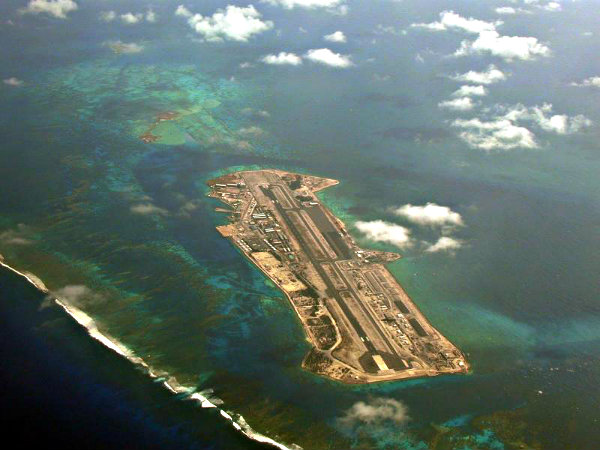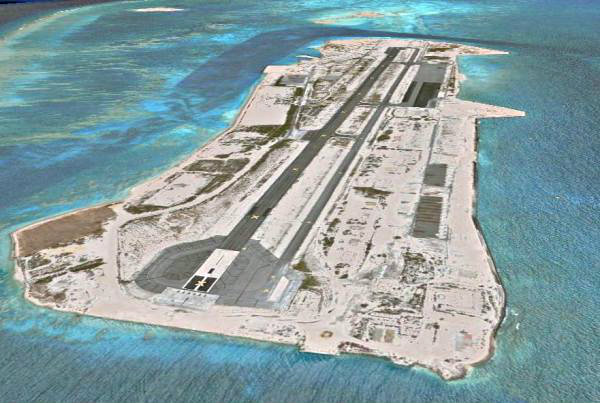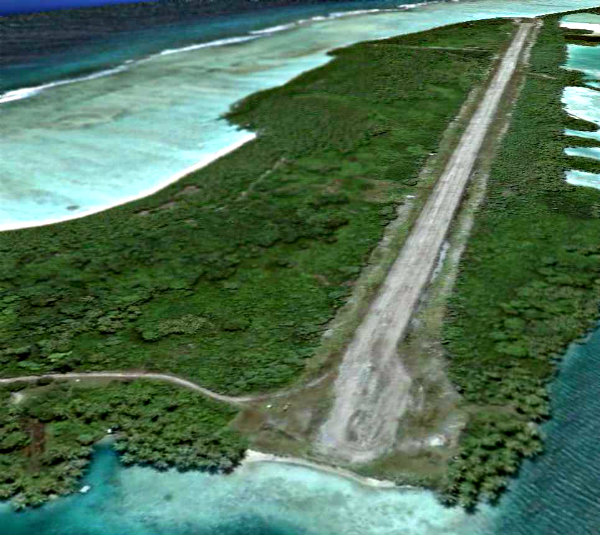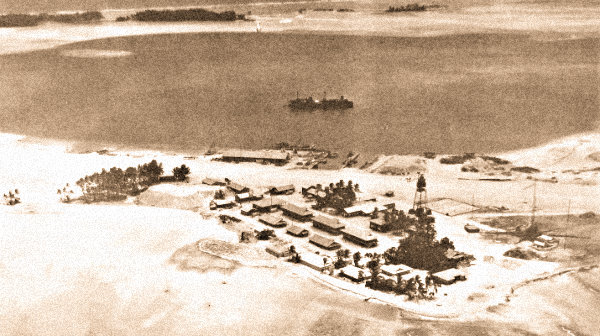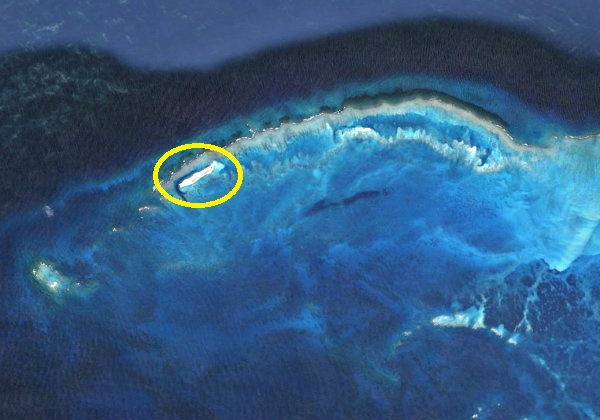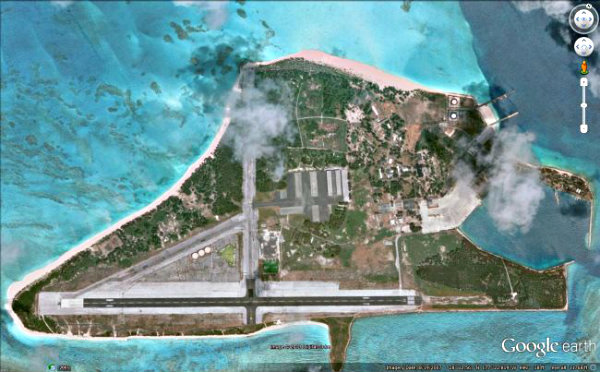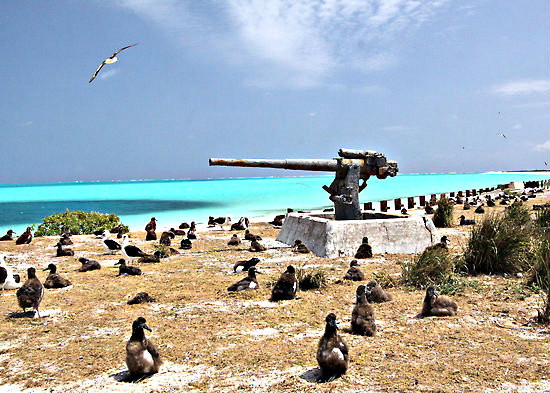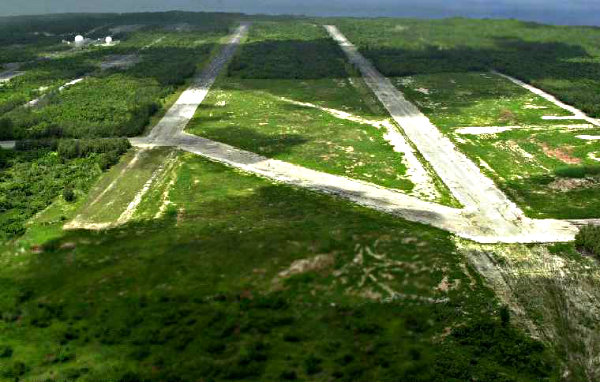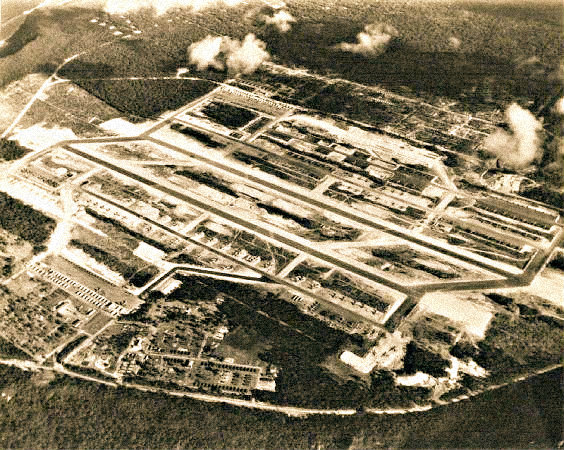Scores of abandoned airfields and other military establishments sit atop small atolls littering the North Pacific Ocean. These edifices were built by the Americans and while they were short-lived and with most of the infrastructures gone, the runways and dispersals left behind are silent witnesses to their great and vital contributions in history especially at war.
Johnston Atoll
Among the remaining abandoned island airfields of the Americans, the one found on Johnston Atoll is arguably, the most impressive looking. The island being a military post had long been over and since the United States Fish and Wildlife Service reclaimed it, nature has also changed what used to be its splendid-looking military base.
Palmyra Atoll
Though now a research center used by scientists to study the effects of global warming, Palmyra Atoll used to be a primary staging post for planes which flew between Hawaii and Australia during the Second World War.
The atoll was once owned privately by a number of American citizens. But when the island was placed under the US Navy, the latter built an air base there in 1941 with three large runways. While most of the buildings that make up one of the lost airfields of the Americans are now overgrown by the forest, the main runway is still in use until now.
Tern Island, French Frigate Shoals
Who would have thought that which now is a wildlife reserve was once a majestic, in fact could be the most majestic among the island airfields throughout the globe appearance-wise?
If viewed from air, Tern Island of the French Frigate Shoals has the look of an aircraft carrier. The runway built on it had taken almost every inch of the land. Built way back in 1943, the purpose of this base was to be a reserved landing ground for Pearl Harbor’s Naval Air Station. However, a tidal wave in 1946 wiped it out.
After the said incident, the US Coast Guard used the island.
Midway Eastern Island
The Midway Atoll is made up of two small islands literally swallowed up by American airfields which until today is in existence. The larger of these bases, Henderson Field which is located on Sand Island, is in use up to this date as a public airport and is being subsidized by Boeing. The smaller and original one which was built on Eastern Island, a strategic American facility during the Second World War, was abandoned shortly after seeing violent conflict through time the culmination of which was the gore-filled Battle of Midway.
The Battle of Midway was fought on June 4 to 7 of 1942 and is believed to be the most vital naval battle of the Pacific campaign during WWII. Six months after Japanese forces attacked Pearl Harbor, the US Navy was able to thwart an attack by the Japanese Navy against Midway Atoll. This crippled the latter greatly and in turn, changed the course of the said conflict.
Over six decades later, what was once a scene of intense fighting has now become a home for birds and other wildlife. However, marine debris and other difficulties caused by lead-based paints used during the making of the airfields continue to be environmental problems until this day.
Guam Northwest Field
The building of the Guam Northwest Field started in 1944 with the purpose of supporting the massive B-29 bomber. Two big runways were constructed for the said base which, until now, are still in existence though the taxiways were not finished at first and the aircraft had to be towed to their parking spots through rough corals.
And although the Guam Northwest Field had been abandoned years ago – in 1958 to be exact – accessing the area is still difficult as it fell under the jurisdiction of the Andersen Air Force Base formerly known as North Field.
The said base is still operational up to this day since it was constructed during WWII and played a vital role during the Vietnam War. Today, the base houses the B-2 Spirit bomber as well as the B-52.
